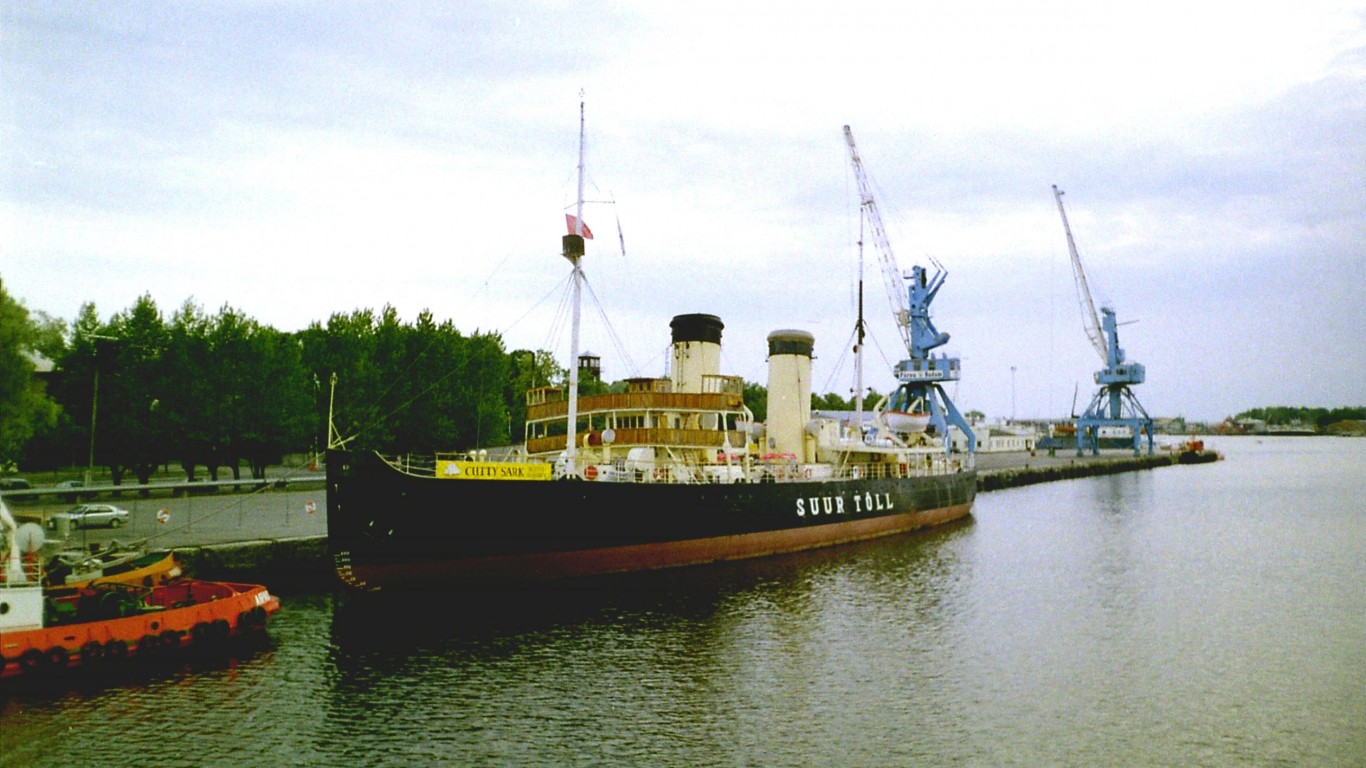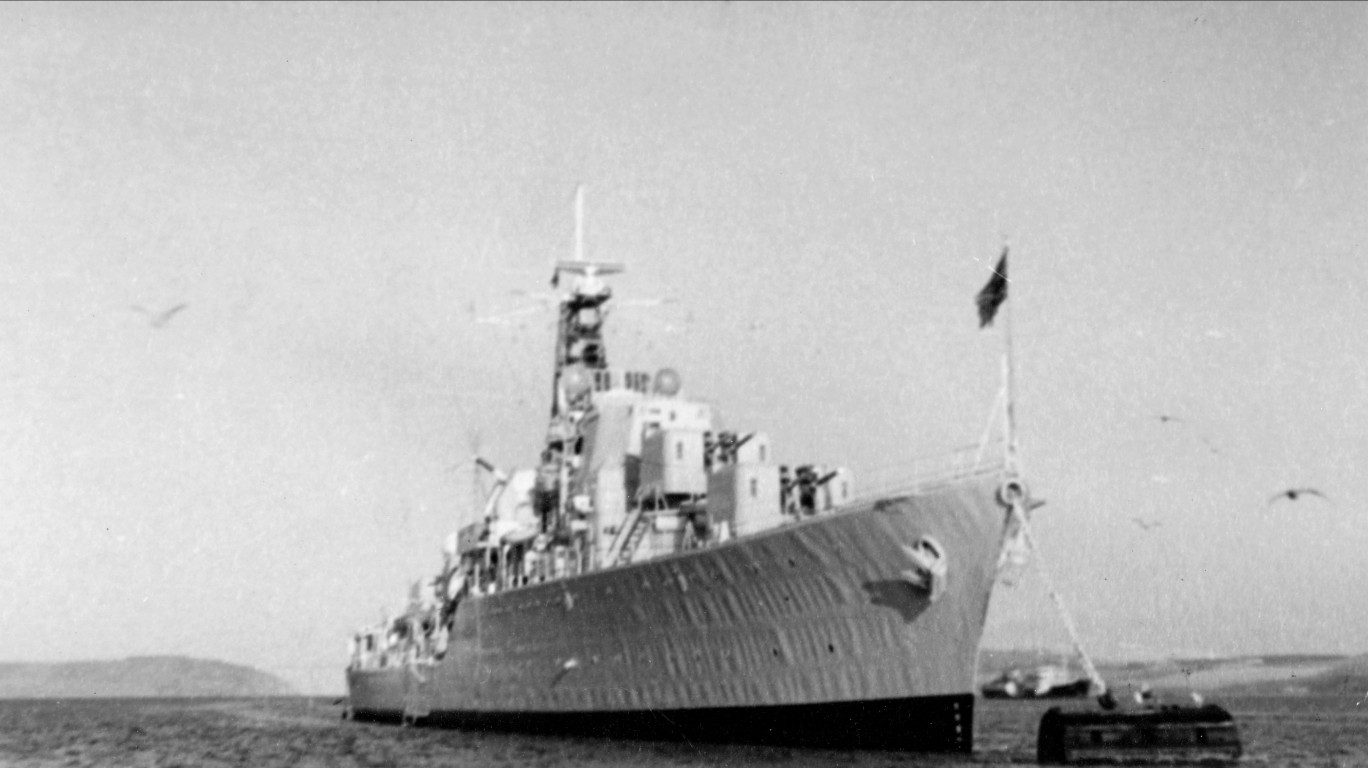
Since time immemorial, nations have built powerful navies to project their power and influence to all corners of the globe. In cases such as ancient Rome or the British Empire, the strength of their naval forces seemed disproportionate to the actual size of the country that launched them.
To identify the biggest navies in history, 24/7 Tempo reviewed sources like Encyclopedia Britannica, National Interest, World Atlas, Popular Mechanics, and other historical sources. While this list is not meant to be a definitive roll call of every large navy in history, it includes many of the most famous and historically significant fleets. The ancient Greek Navy obviously would be no match for modern fleets such as the U.S. Navy, but it earned its place on the list because of the prominent role it played in the destiny of Western Civilization.
When one thinks of military encounters that changed the course of history, names such as Thermopylae, Gettysburg, and Stalingrad come quickly to mind. However, the results of battles involving nations’ largest navies have had enormous historical consequences as well.
Perhaps history’s most famous naval battle was the defeat of the Spanish Armada by the Royal Navy in 1588. By thwarting the invasion of England, the Royal Navy helped lay the groundwork for one of the world’s largest empires.
Though outnumbered by the Persian fleet, the Greek Navy routed the invaders at Salamis in 480 B.C. and preserved the nascent notion of democracy.
In 1940, the Royal Navy removed Italy as a maritime opponent in the Mediterranean Sea with a surprise attack on its ships in the Italian port of Taranto during World War II. The Japanese Empire took note. Its powerful navy steamed toward Hawaii in late 1941 and launched a dawn attack that crippled, but did not destroy, the U.S. Pacific Fleet. The attack brought the U.S. into WWII. (This is the U.S. Navy’s first warship.)
Click here to see the peak strength of history’s most powerful Navies
20. Royal Netherlands Navy
> Est. fleet size: 70
> Time of peak strength: 1689
The Royal Netherlands Navy was a formidable force in the 16th and 17th centuries. It grew in strength and size to protect the burgeoning Dutch trading interests all over the world. Mercantilism was the economic model for early European nation-states, so shielding commerce was of great national interest. The Dutch fought several wars with the United Kingdom in the 17th century as the two vied for oceanic supremacy. In 1667, Dutch mariners handed the Royal Navy one of its worst defeats ever in English waters, in the Second Anglo-Dutch War.
[in-text-ad]
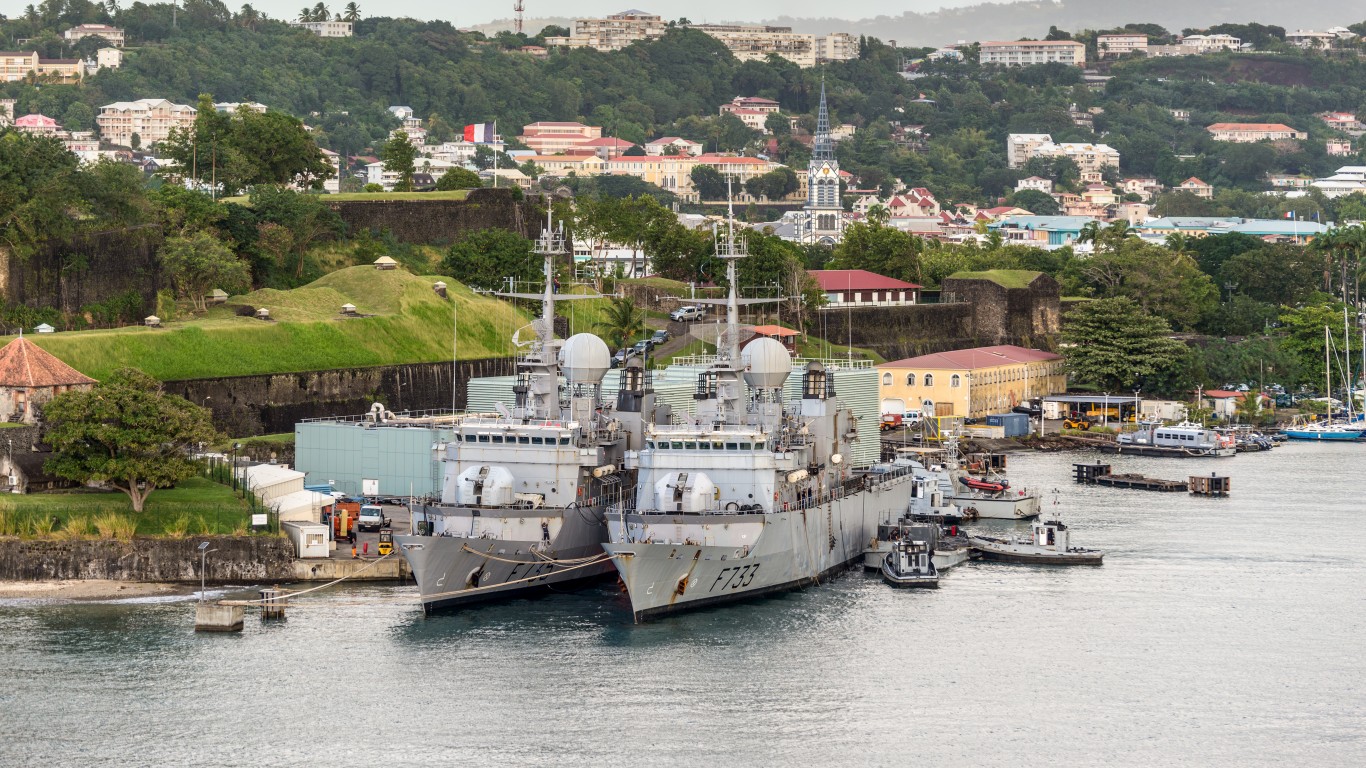
19. Royal French Navy
> Est. fleet size: More than 90
> Time of peak strength: 1630
Until the early 17th century, France used a system of regional admiralties that was similar to that of the Netherlands. That changed under French clergyman and statesman Cardinal Richelieu. He took over supervision of the French Royal Navy by consolidating command of the navy and eliminating the regional admiralties.
By 1630, France had built more than 90 ships and established naval ports at Le Havre, Brest, and Brouage. The navy would become a key part in France’s foreign policy and crucial to protecting French commerce.
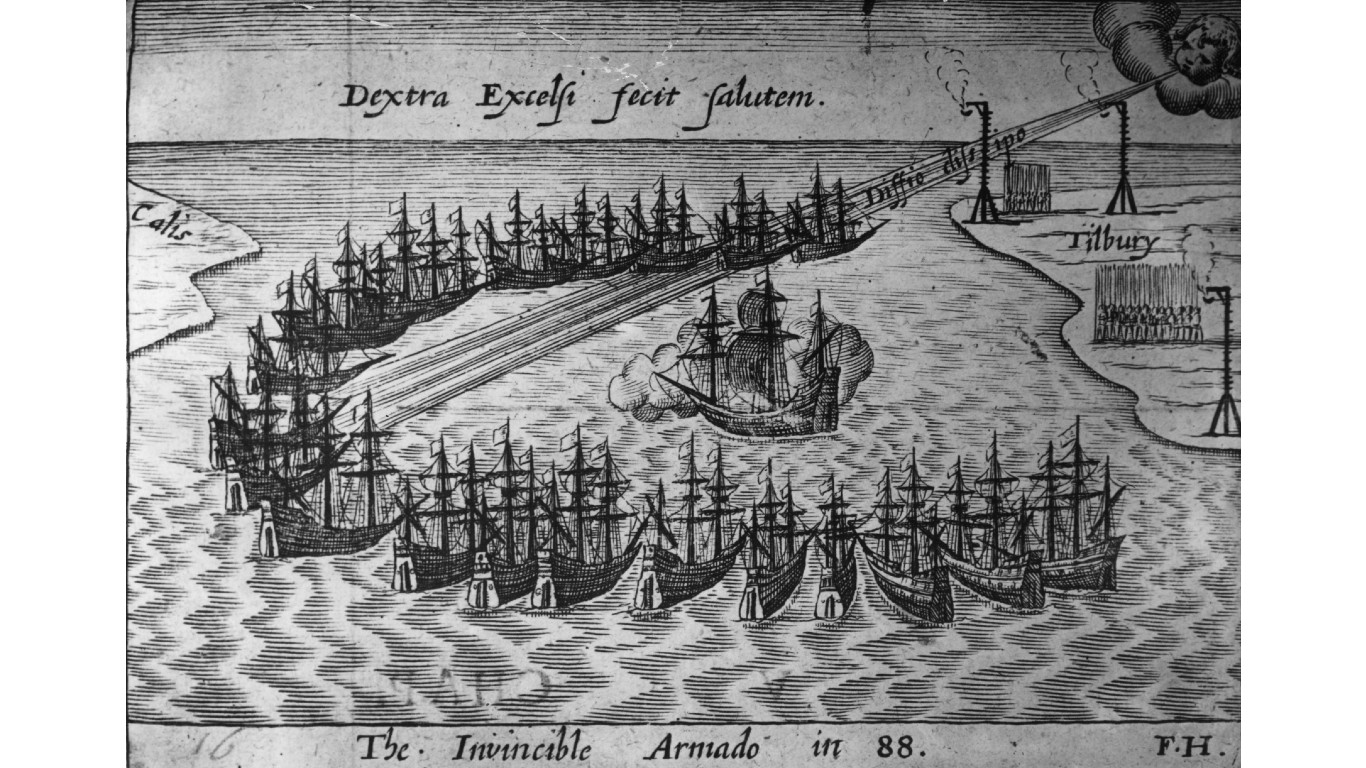
18. Spanish Armada
> Est. fleet size: 130
> Time of peak strength: 1588
The Spanish Armada, or the Invincible Armada, was considered to be the dominant maritime power by the end of the 16th century. Spanish King Philip II sent the naval force to try and restore the Catholic faith in England and to stop English pirates from plundering Spanish ships laden with possessions from Spain’s colonies in the Western Hemisphere.
The English ships were smaller, more maneuverable, and more heavily armed than the Spanish fleet, and they routed the armada. Tempests in the Atlantic Ocean destroyed or dispersed many of the surviving ships. The victory set England on a course of empire building.
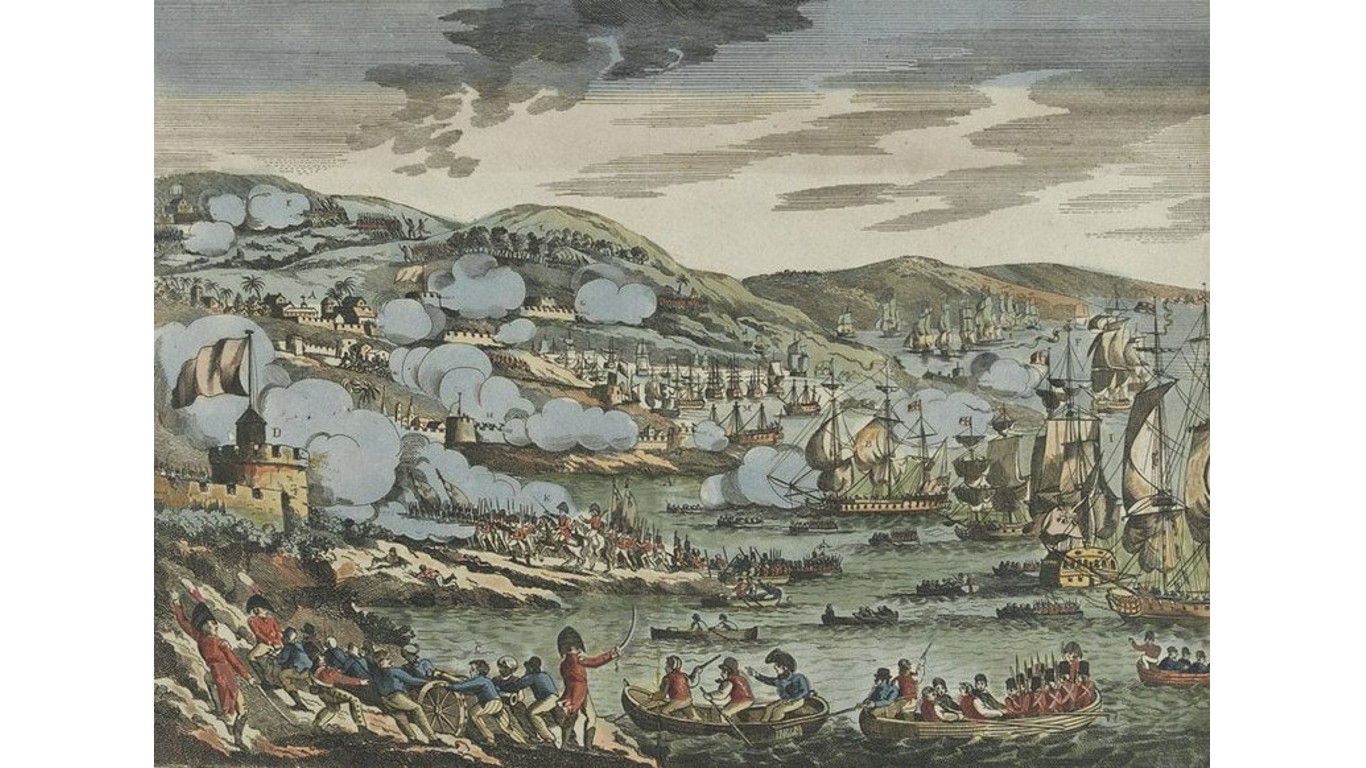
17. English Navy
> Est. fleet size: 200
> Time of peak strength: 1588
At the time of the Spanish Armada, the English Navy was commanded by Charles Howard, 2nd Baron Howard of Effingham, and his second in command was the legendary Sir Francis Drake. Small English ships were fast and well armed for their size. The English relied on artillery and had many more guns, which were also heavier, than most of their foes. They also had an advantage in artillery range. They used these advantages to defeat the Spanish Armada in 1588.
[in-text-ad-2]
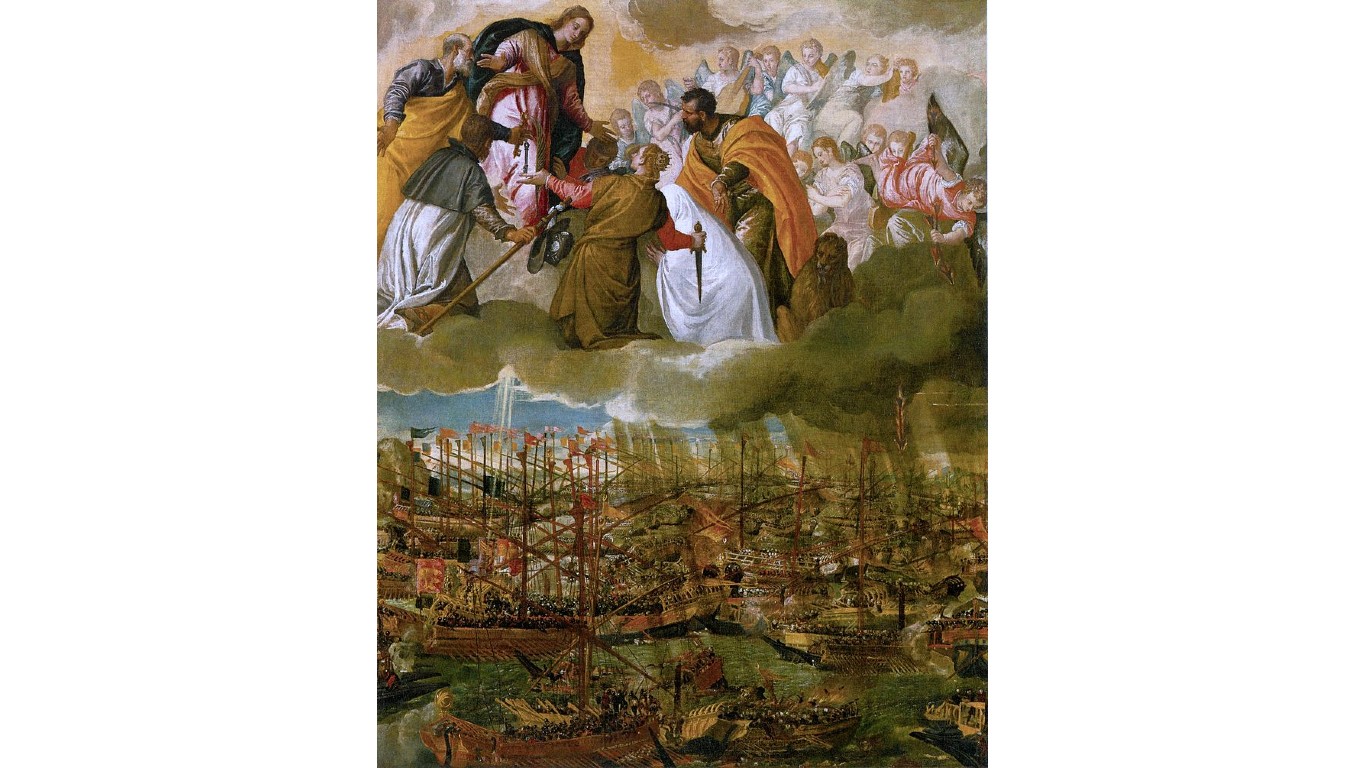
16. Holy League Fleet
> Est. fleet size: 213
> Time of peak strength: 1571
The Holy League Fleet was composed of vessels from Spain, Malta, Genoa, Savoy, and Venice when it met a similar sized Ottoman Empire force in the Battle of Lepanto in 1571. The Holy League Fleet had six large galley-like ships bristling with 44 guns as well as 207 oar-powered galleys.
The Christian navy won the battle, its first major naval victory for a Christian naval force over a Turkish fleet, and it marked the last significant conflict involving oar-propelled ships.
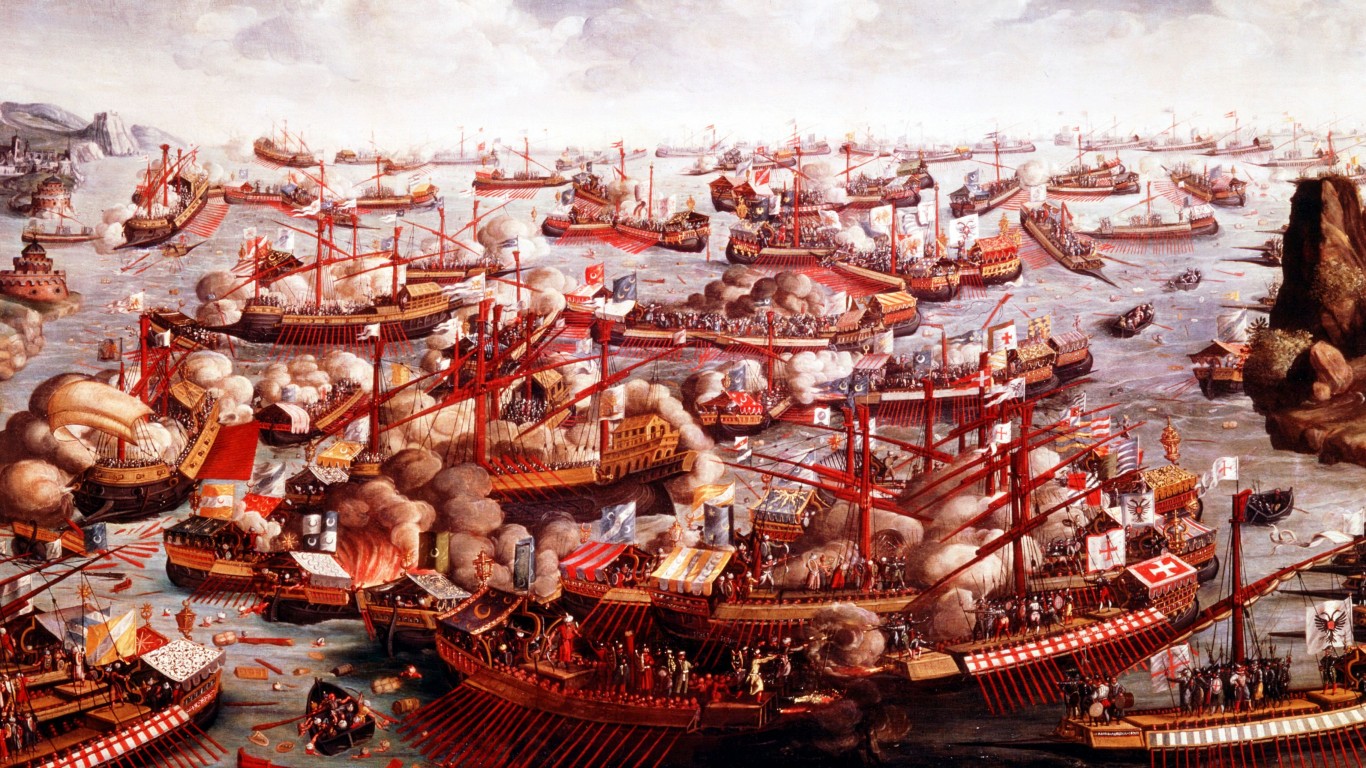
15. Ottoman Empire Navy
> Est. fleet size: 230
> Time of peak strength: 1571
Although history gives the armies of the Ottoman Empire much attention, its navy was critical in the expansion of the empire. The navy played an important role in the historically important conquest of Constantinople in 1453 as 110 ships participated in the siege. The navy suffered a setback to a combined Christian fleet at the Battle of Lepanto in 1571.
The Ottoman navy enabled the empire to expand into the Mediterranean and Black Seas. At its height in the 16th century, the navy plied the Indian Ocean, and by the early 17th century it operated in the Atlantic.
[in-text-ad]
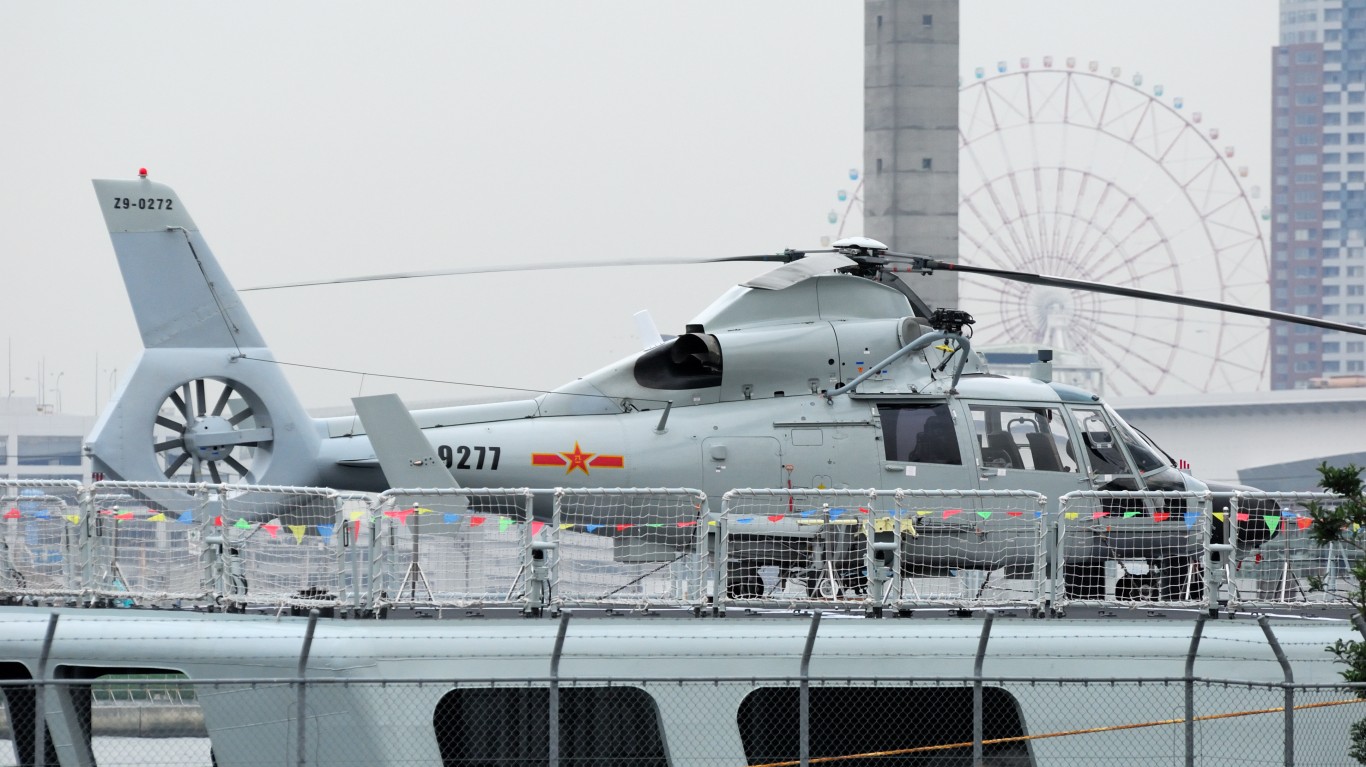
14. People’s Liberation Army Navy (China)
> Est. fleet size: 253
> Time of peak strength: 2021
Under the leadership of President Xi Jinping, the People’s Liberation Army Navy has been growing dramatically since the 1990s. It has become a force to be reckoned with in the Pacific Ocean and is emerging as a serious challenge to American naval might in the region. In June, the Chinese navy launched its third and most advanced aircraft carrier, the Fujian.
China’s goal is to have six carrier strike groups in operation by 2035. China is building a network of port facilities and dry docks across the Indian Ocean to accommodate its growing naval fleet. The Chinese have revamped their naval base at Djibouti to handle their aircraft carriers. They are negotiating base rights in Equatorial Guinea on Africa’s west coast with the intention of projecting their naval presence to the Atlantic Ocean.

13. Russian Navy
> Est. fleet size: 265
> Time of peak strength: 2022
Originally established as the Imperial Russian Navy in 1696 by Peter the Great, Russia has operated fleets in the Baltic Sea, the Black Sea, and the Pacific. Since the end of the Cold War, the fleet has lacked the funding to upgrade all classes of ships – aircraft carriers, cruisers, destroyers, and submarines. The ballistic missile submarine force is considered quite deadly by military experts and is the main reason the fleet is among the most formidable in the world.
The great buildup of ships during the Soviet Union era has been a financial and logistical burden on Russia today as it tries to dispose of antiquated equipment. Russia dominated the Black Sea in the first weeks of the war with Ukraine but was handed a major setback when its flagship, the Slava class cruiser Moskva, was sunk by two Ukrainian anti-ship missiles in April.
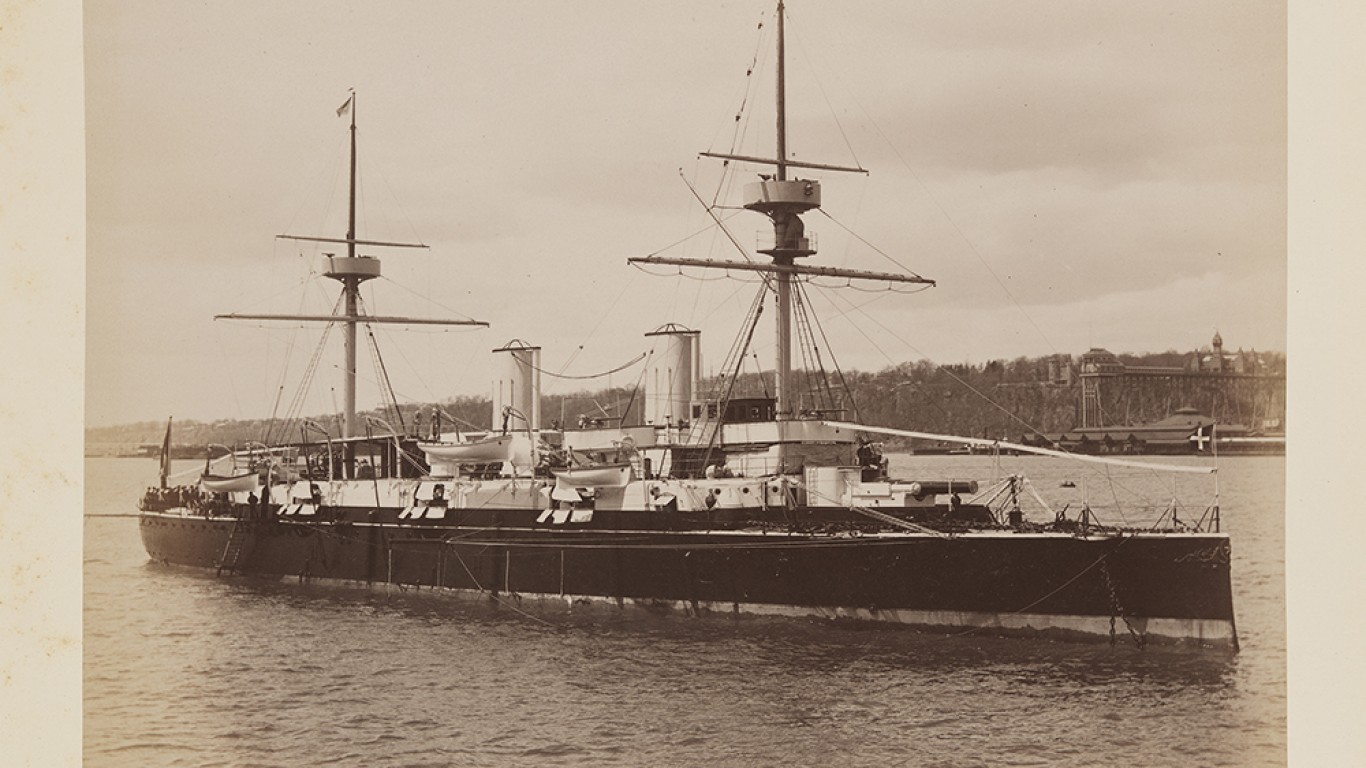
12. Regia Marina (Italy)
> Est. fleet size: 267
> Time of peak strength: 1939-1945
The Regia Marina, Italian for Royal Navy, was the naval force of the Kingdom of Italy. It originated in 1861 following Italian unification. After assuming power in 1922, dictator Benito Mussolini saw control of the Mediterranean Sea as critical to creating a new Roman empire. At the start of WWI, Italy had the fifth largest navy in the world. It lacked technological advances such as sonar and radar, and Italy’s shortage of natural resources hindered its ability to replace losses in combat.
The Regia Marina suffered a devastating defeat in November 1940, when British torpedo bombers launched a surpise attack at the Italian fleet anchored in Taranto, crippling or destroying half of the ships. The result of the attack altered the balance of power in the Mediterranean in favor of Great Britain.
[in-text-ad-2]

11. Chinese Navy
> Est. fleet size: 317
> Time of peak strength: 1433
Propelled by the outward-looking Ming Dynasty, the Chinese Navy of the 15th century was the most powerful and technologically advanced in the world. Led by renowned admiral Zheng He, the navy undertook seven voyages in and around the Indian Ocean as Chinese ships sought to secure trading routes. Sixty of the 317 ships were so-called “treasure ships” more than 400 feet long, 160 feet wide, with nine masts and 12 sails.
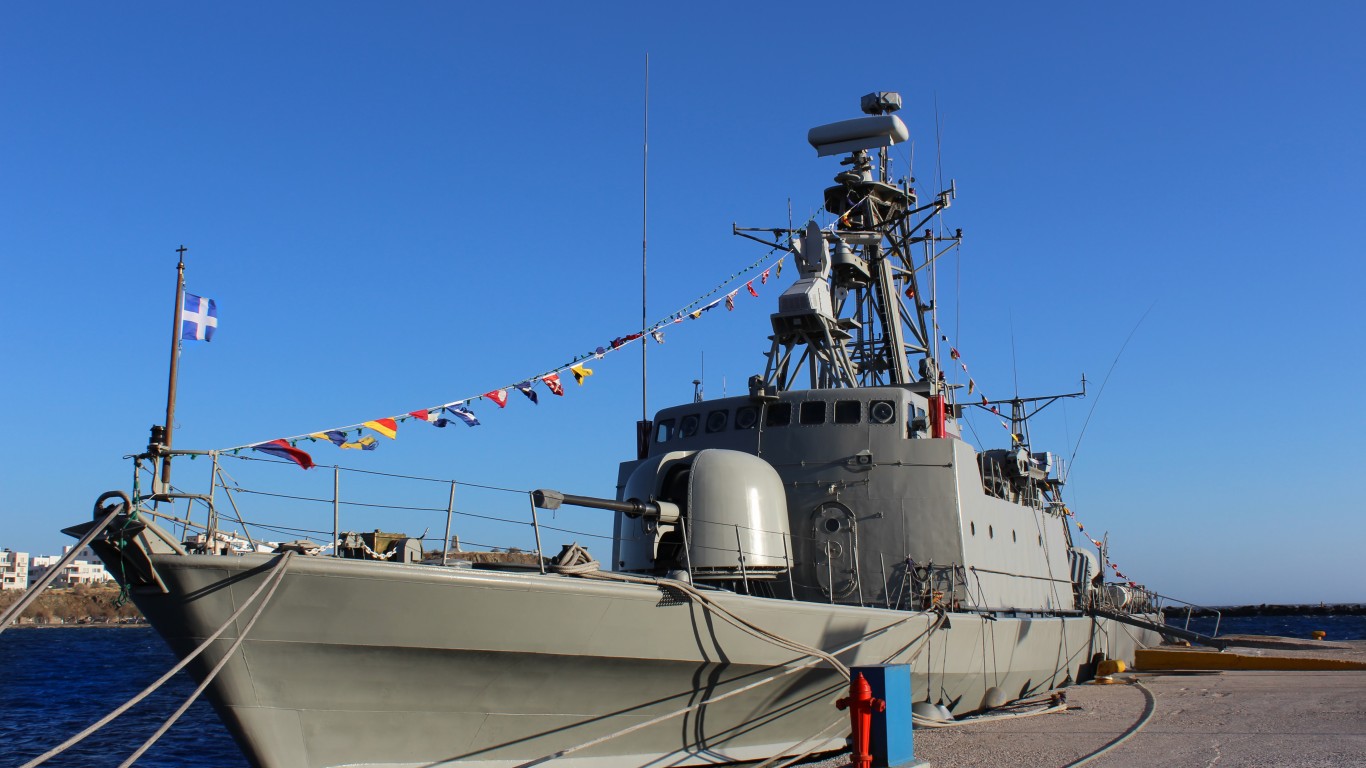
10. Greek Navy
> Est. fleet size: 381
> Time of peak strength: 480 BC
The Greek Navy assembled in the straits around Salamis island. The navy numbered 381 triremes – oared warships – and was among the largest at the time. Led by Themistocles, the more maneuverable Greek vessels routed a larger Persian fleet. It was one of history’s great tactical victories, and it stopped the Persian invasion of Greece.
[in-text-ad]
9. Imperial German Navy
> Est. fleet size: 421
> Time of peak strength: 1914-1918
After the creation of the German Empire in 1870, Germany was the greatest land power in Europe. Even though the Royal Navy ruled the waves, Kaiser Wilhelm II committed Germany to a shipbuilding program in the 1890s that would eventually challenge Great Britain.
After WWI began, the Imperial German Navy stayed mostly in port, except for meeting the Royal Navy in the Battle of Jutland. Germany sank more ships than the British, but the Germans broke off the fight and returned to port and never engaged the Royal Navy again. The German Empire shifted its naval strategy to building submarines – 140 at peak strength – to attack transport ships bound for Great Britain in an attempt to starve the British into submission.
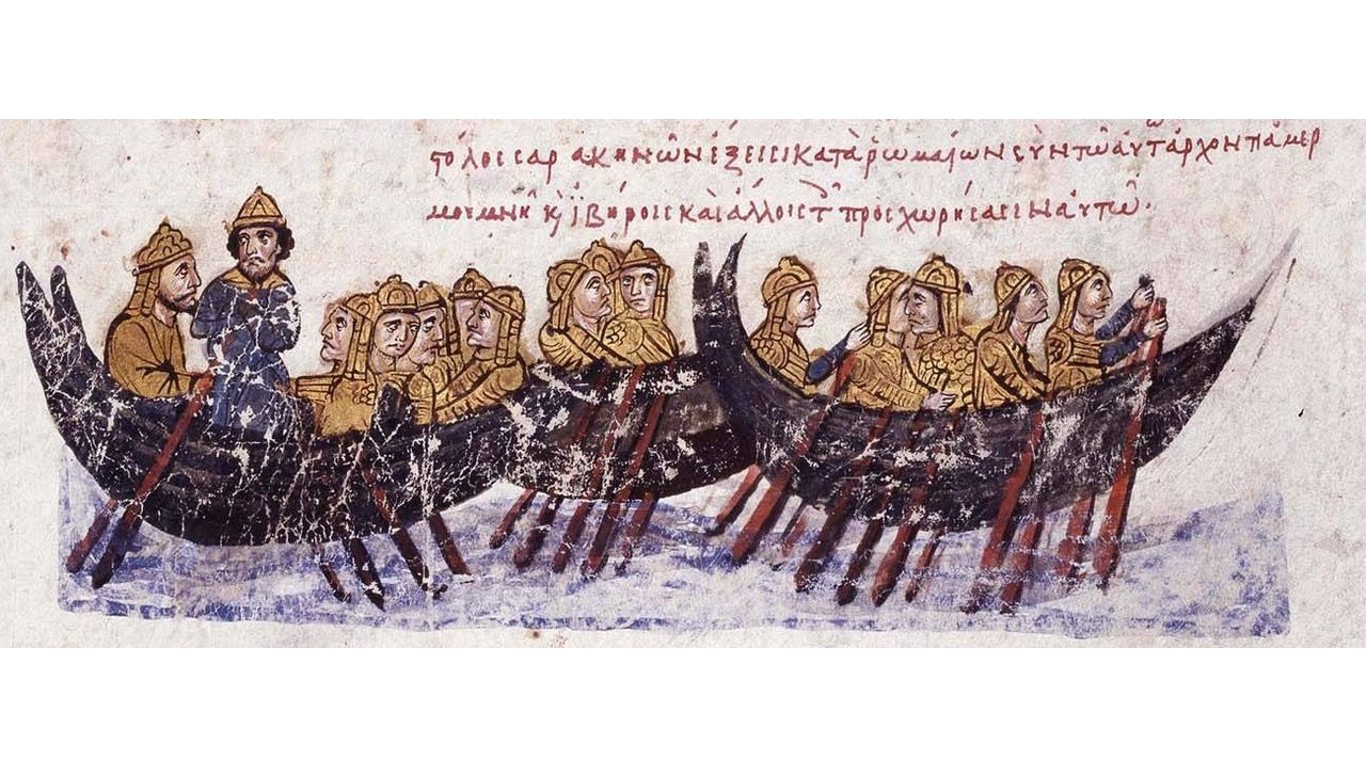
8. Orthodox Byzantine Navy
> Est. fleet size: 500
> Time of peak strength: 655
Constantinople was the capital of the Byzantine Empire, and because it had water on three sides, the empire required a strong navy. Though Byzantine warships were fairly typical oar-driven galleys of the time, they had a weapon that gave them an advantage over rivals – Greek fire.
The highly flammable mixture was tossed on enemy ships in pots via catapults, becoming white hot on contact. This terrifying weapon enabled the Byzantine navy to hold sway over the Black Sea and the eastern Mediterranean for centuries. The Byzantine navy swelled to 500 ships by 655 A.D., when it lost the Battle of the Masts to a Muslim fleet.
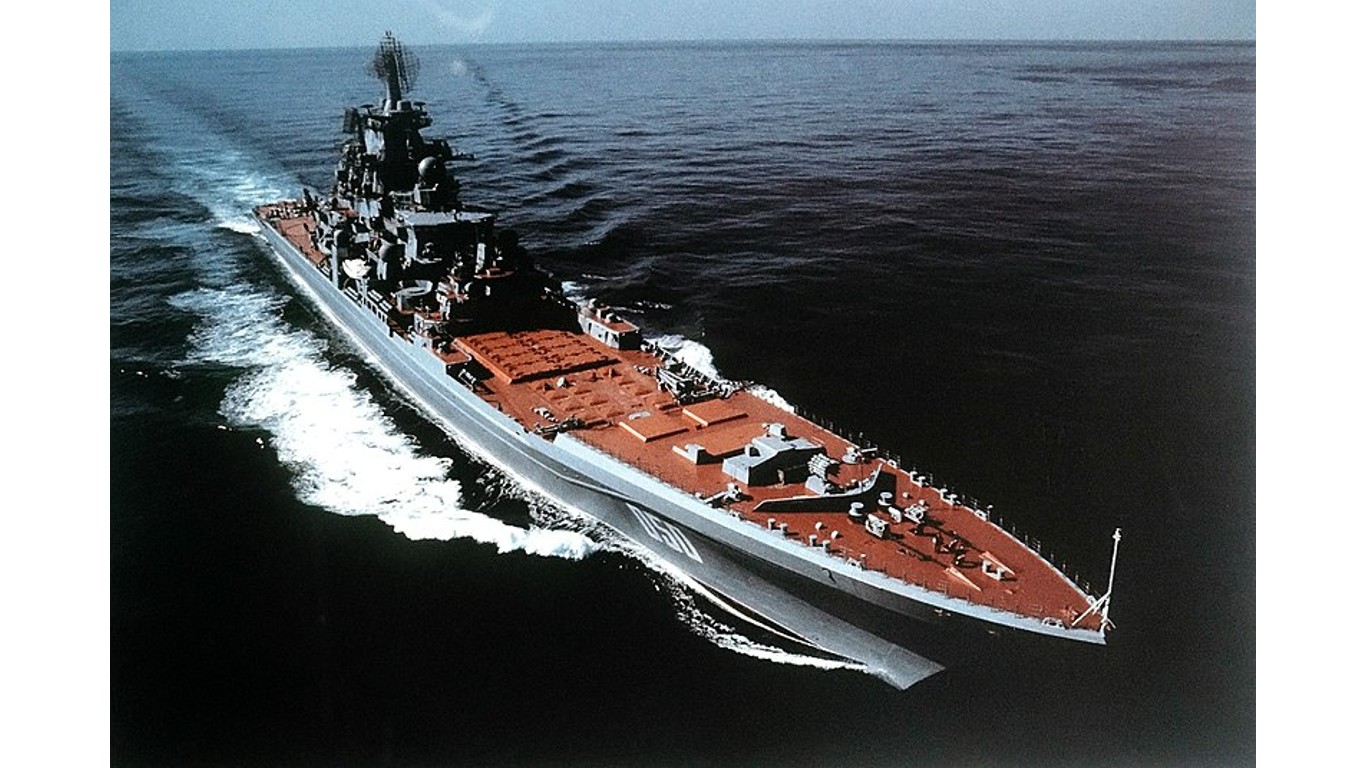
7. Soviet Navy Red Fleet
> Est. fleet size: 600
> Time of peak strength: 1990
The Soviet Navy Red Fleet began a massive upgrade once WWII was over and the Cold War was heating up. From the Soviet perspective, the communist nation needed a bulked-up navy to support communist regimes emerging in former colonies in Asia and Africa.
By the end of the Soviet Union in 1990, its navy had swelled to about 600 ships, many of them ballistic-missile carrying submarines that remain among the most lethal even in Russia’s current arsenal. Virtually all of the ships became part of the modern Russian Navy, and Russia today lives with the legacy of trying to mothball a fleet too big to upgrade.
[in-text-ad-2]

6. Imperial Japanese Navy
> Est. fleet size: 650
> Time of peak strength: 1941
Japan is an island nation like England, and like the British, the Japanese amassed a large navy. The Imperial Japanese Navy, constructed between the world wars, was one of the most powerful navies of all time. At the start of WWII, Japan possessed 10 aircraft carriers, 12 battleships, including the powerful Nagato class, and many modern cruisers, destroyers, and submarines.
The IJN rolled up victories at Malaya, Pearl Harbor, and the Solomon Islands before American military and industrial might overwhelmed Japan.

5. Song Dynasty Navy
> Est. fleet size: 1,000
> Time of peak strength: 1279
In the 13th century, the Song Dynasty, though weakened by corruption, managed to assemble a naval fleet as large as 1,000 vessels by the time it met a much smaller maritime force of the Yuan Dynasty at the Battle of Yamen in 1279. The Mongol navy, using fire ships and firebombs, routed the Song Dynasty Navy, whose sailors had been weakened by the effects of the Mongol blockade.
[in-text-ad]
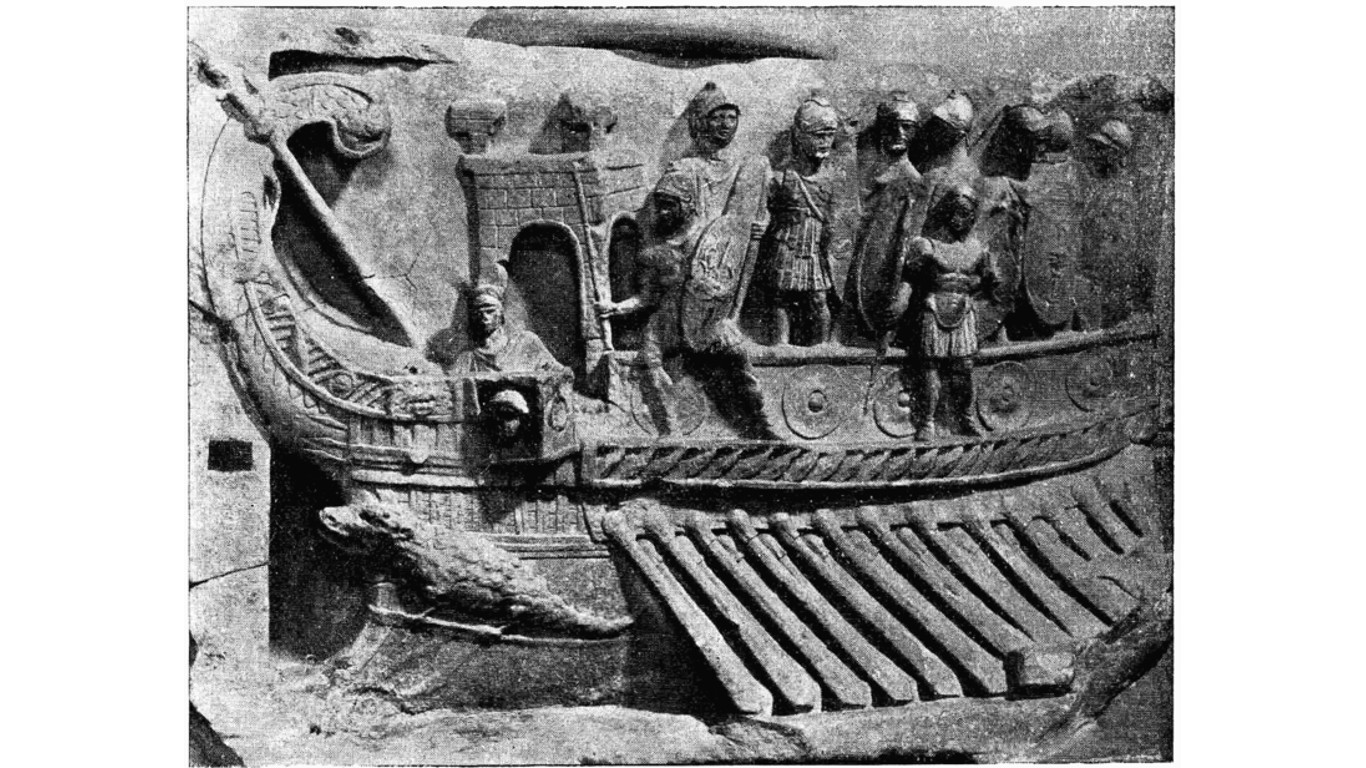
4. Roman Navy
> Est. fleet size: 1,000
> Time of peak strength: 48 BC
Ancient Rome did not become a sea power until the First Punic War against maritime powerhouse Carthage. By the middle of the war, Rome had built a navy of 330 ships, many of them based on the designs of a Carthaginian vessel that had run aground and was captured.
Rome’s superior engineering and manufacturing capability to make bronze rams to disable enemy ships gave its galleys an advantage. As the Roman Republic ended, Rome’s naval strength had swelled to 1,000 ships by the time of the civil war between Pompey and Julius Caesar.
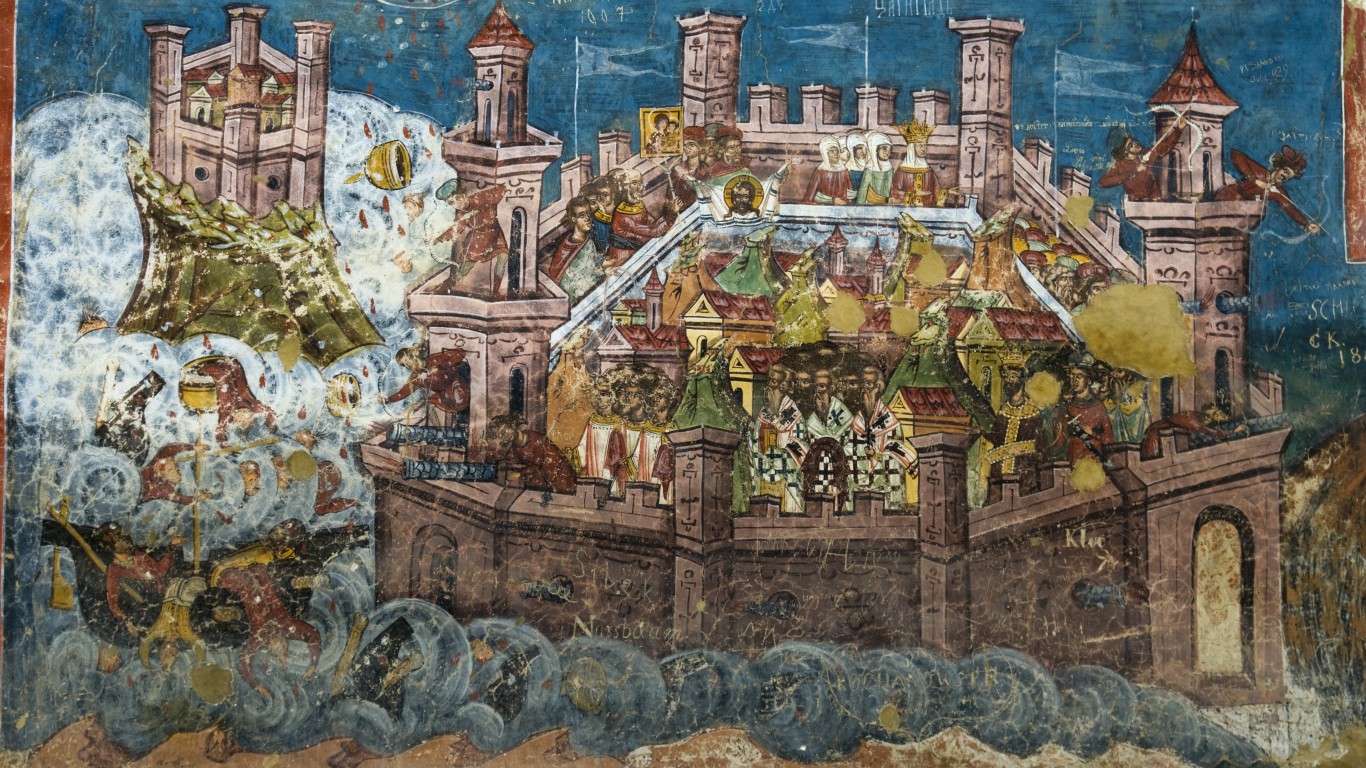
3. Persian Navy
> Est. fleet size: 1,207
> Time of peak strength: 480 BC
The Persian Empire under ruler Xerxes was a land power, but it also possessed the era’s largest navy, composed of mariners from conquered seafaring nations – Phoenicians, Egyptians, Cypriots, and sailors from various parts of Greece and Asia Minor. At its height, the fleet numbered 1,207 triremes, oared warships, but lost about 250 to storms and skirmishes leading up to the battle at Salamis against the Greek Navy, which it lost.
2. Royal Navy
> Est. fleet size: 2,313
> Time of peak strength: 1945
The end of the Napoleonic Wars in Europe left the Royal Navy as the largest and most powerful in the world, and it would remain so until the end of WWII. The navy was an important element in the “Pax Britannica” period between 1815 and 1914.
As the navy of an island nation, a powerful naval force was crucial for the extension of the British Empire around the globe and to securing the sea lanes to its colonies in North and South America, Asia, and Africa.
[in-text-ad-2]
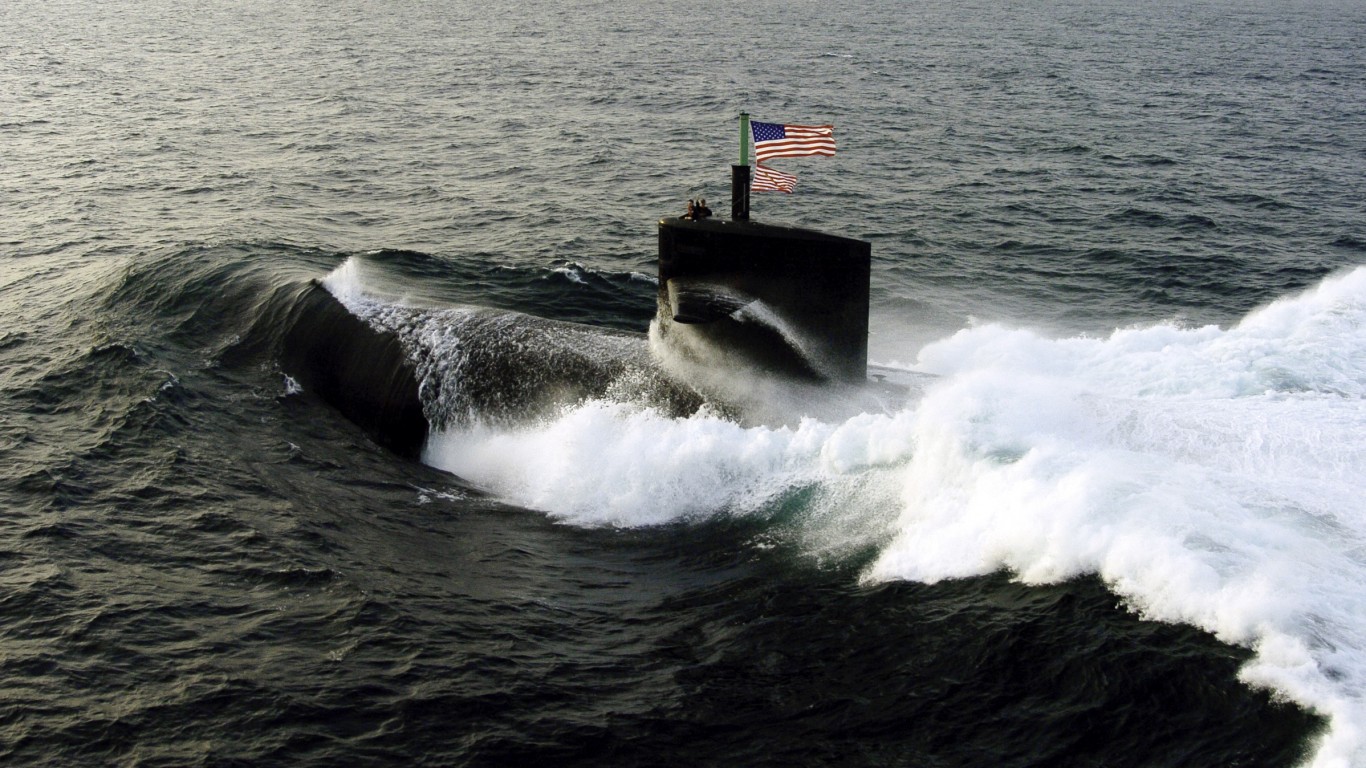
1. United States Navy
> Est. fleet size: 6,768
> Time of peak strength: 1945
The mightiest navy of all time was the United States Navy of 1945 as WWII ended. After the disastrous Japanese attack on Pearl Harbor, the navy grew from 790 ships in December 1941 to 6,768 ships by August 1945.
America won a two-ocean war. In the Pacific, the navy was victorious at Midway and the Philippines and destroyed the Imperial Japanese Navy, one of the world’s largest at the start of the war. In the Atlantic, the navy was tasked with protecting transport ships against German U-boats and with conducting invasions of North Africa, Italy, and France.
100 Million Americans Are Missing This Crucial Retirement Tool
The thought of burdening your family with a financial disaster is most Americans’ nightmare. However, recent studies show that over 100 million Americans still don’t have proper life insurance in the event they pass away.
Life insurance can bring peace of mind – ensuring your loved ones are safeguarded against unforeseen expenses and debts. With premiums often lower than expected and a variety of plans tailored to different life stages and health conditions, securing a policy is more accessible than ever.
A quick, no-obligation quote can provide valuable insight into what’s available and what might best suit your family’s needs. Life insurance is a simple step you can take today to help secure peace of mind for your loved ones tomorrow.
Click here to learn how to get a quote in just a few minutes.
Thank you for reading! Have some feedback for us?
Contact the 24/7 Wall St. editorial team.
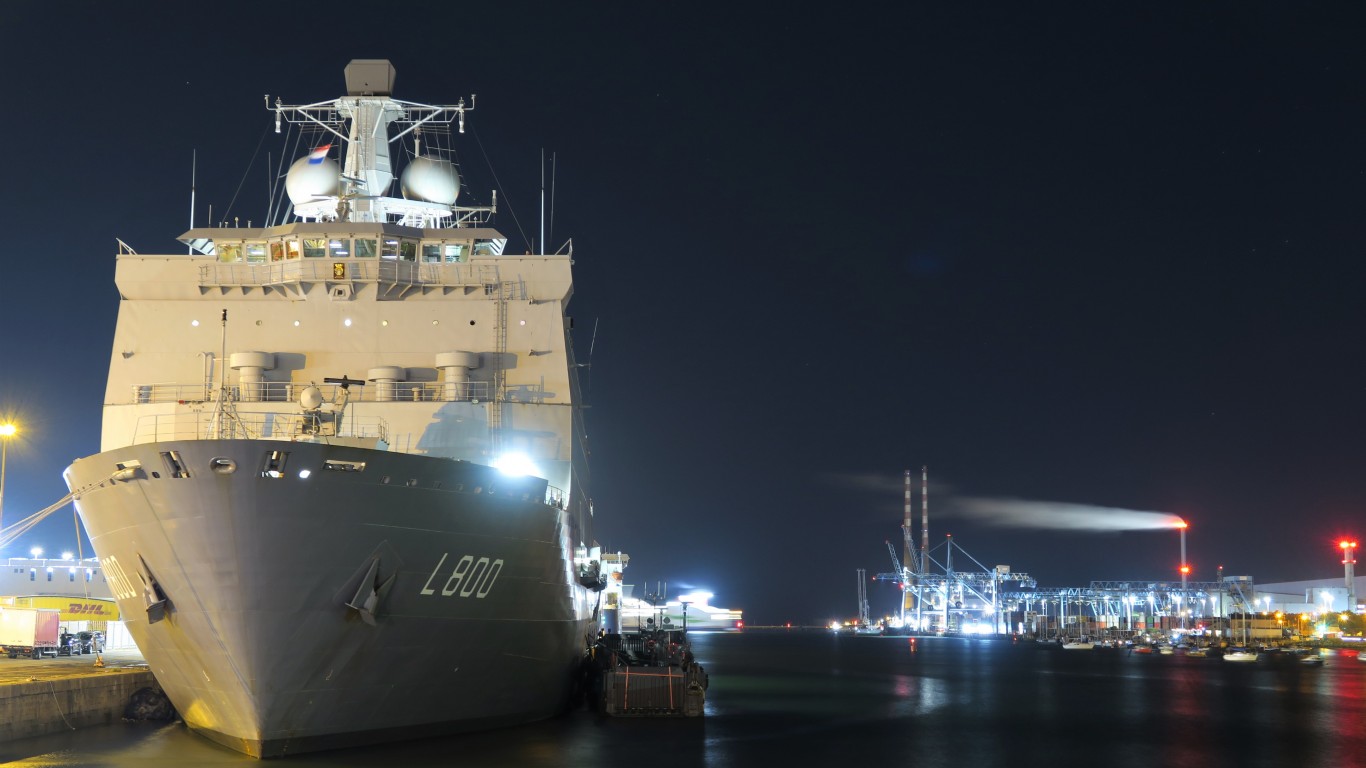
 24/7 Wall St.
24/7 Wall St.